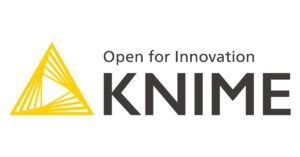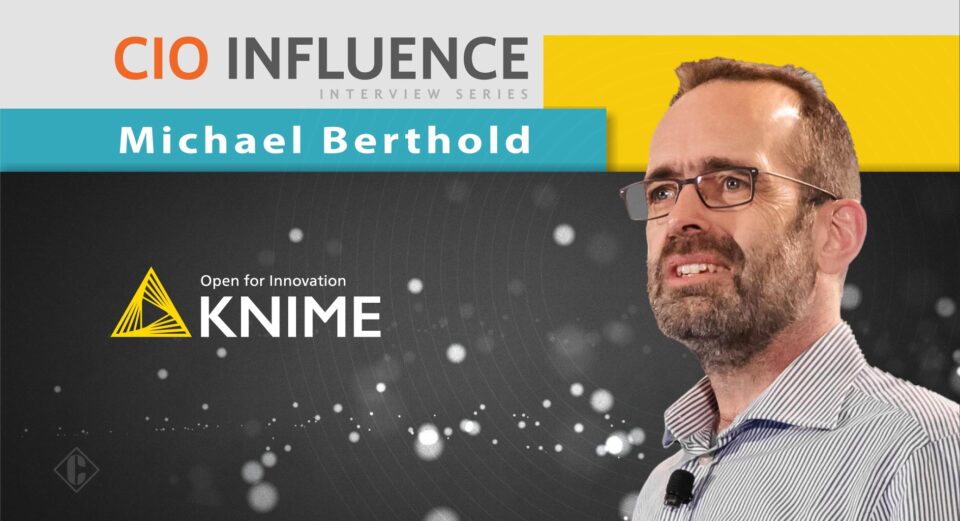“Data Science, if done properly, is complex enough, make sure you focus on learning what those methods do and noT how they are doing it..”
Hi, Michael. Welcome to the Technology Interview Series. Tell us a little bit about your role and responsibilities at KNIME.
I am the CEO and one of the founders of KNIME. I am primarily involved in driving the strategic direction of KNIME and trying to predict where data science is going to be in few years from now.
How has KNIME evolved in the last 3 years? How did you scale your business during the pandemic months?
We’ve continued to grow steadily during and since the pandemic. Coming out of the “home office only” times, we have made the conscious decision to not be a remote-only company. But, we are still giving people the opportunity to work from home when they prefer. In the end, it doesn’t matter that much when and where people do their best work, but meeting your colleagues face-to-face from time to time is also extremely valuable.

In recent years, we have invested heavily into improving the user experience for our platform as we recognize that ease of use is critical to upskilling for organizations. We’ve also improved our integrations and recently, we debuted KNIME Analytics Platform 5.0. We’ll continue to build on this progress over the years ahead.
Open source can be tricky at times for cybersecurity-related incidents. How can CIOs and CISOs overcome security challenges when dealing with Open Source platforms?
In my opinion, open source actually makes that easier because the code base is transparent. Just because proprietary software is hidden, doesn’t make it less vulnerable. The only difference is that potential problems are more immediately visible to everybody, but I see that more as an advantage than a disadvantage. If there is a problem in the code, the community tends to spot that fairly quickly.
You work with some of the biggest brands in the world. Could you please highlight your experience in empowering these organizations with high-quality data science-as-a-service?
We are not yet really providing our software as a service. We are beginning to, but the majority of our customers use KNIME on-premise. Also, if data science consulting services are required, we usually involve partners – in a nutshell: we provide the (data science) lego. Our customers build specific solutions with that “lego” (sometimes with the help of a partner). What we do provide as a service is a community data science workflow hub where we share with the community data science best practices and blueprints.
Read More: CIO Influence Interview with Archie Agarwal, Founder and CEO at ThreatModeler
What has changed in the data science landscape since the launch of ChatGPT? How are you turning the throttle on Generative AI developments at KNIME?
The need to creatively find new insights in data will not be addressed by ChatGPT and similar technologies. However, the tools for doing that will benefit greatly. With our new release, our users can go both ways. We will add an integration of those technologies into KNIME so they can be used as part of a KNIME workflow. We are also adding a chat assistant that makes workflow building a lot easier.
Your advice to the data science teams on what’s the best approach to get started with the technology adoption?
I may be a tad biased, but even if you are already a programmer (and especially if you aren’t), start with a low-code platform so you can focus from day 1 on actually doing data science. With this, you don’t waste time learning how to stitch together different libraries/technologies. Data Science, if done properly, is complex enough, make sure you focus on learning what those methods do and not how they are doing it.
Your predictions on the future of data science for Edge and Quantum Computing domains:
We are already seeing the future of data science on the edge – lots of our users are deploying created models to devices.
As for Quantum Computing – while it’s not my area of expertise, I could see some of the more cumbersome data science model searches being solved almost instantaneously but that’s the obvious one. However, since data science is often about finding the unexpected, I am not sure I see how quantum effects can help.
Do you have an AI roadmap in place at KNIME—what does it look like?
We tend to provide integrations for all relevant technologies into KNIME. We did that during the big data hype, we have done that with a lot of the relevant deep learning environments (first DL4J, later Tensorflow, and Keras), and we are now doing this with the LLMs and other developments. I am not sure I dare to predict what this will look like in 2-3 years, but I foresee more of an augmentation than a replacement: both on the actual data science toolbox and also on the way people build data science applications and services.
Lighter notes:
- Burn the midnight candle or soak in the sun?
- I am a sun guy.
- Coffee, or Tea?
- And both with milk 🙂
- Your favorite KNIME offering that you want everyone to know about?
- The Parallel Chunker Node Pair. I think that’s the last piece of tech that still has code written by me. I hope…
- First memorable experience in your career as a technology leader?
- When the head of the IT department showed up in my cubicle 5 minutes after I sent them an email from root@…com (it was a large, large tech company – and yes, that was 20+ years ago).
- One thing you remember about your employee (s):
- Smart & No-BS. A great bunch of people!
- Most useful app that you currently use:
- Pokemon Go. It keeps me walking every day…
Read More: CIO Influence Interview with Jim Kwiatkowski, CEO at LTX, a Broadridge Company
Thank you, Michael! That was fun and we hope to see you back on cioinfluence.com soon.
[To participate in our interview series, please write to us at sghosh@martechseries.com]
 KNIME helps individuals and organizations make sense of their data. KNIME bridges the worlds of dashboards and advanced analytics through an intuitive interface, appropriate for anybody working with data. It empowers more business experts to be self-sufficient and more data experts to push the business to the bleeding edge of modern data science, integrating the latest AI and Machine Learning techniques. KNIME is distinct in its open approach, which ensures easy adoption and future-proof access to new technologies. Today it has a strong user community of 300,000+ across all industries and in over 60 countries.
KNIME helps individuals and organizations make sense of their data. KNIME bridges the worlds of dashboards and advanced analytics through an intuitive interface, appropriate for anybody working with data. It empowers more business experts to be self-sufficient and more data experts to push the business to the bleeding edge of modern data science, integrating the latest AI and Machine Learning techniques. KNIME is distinct in its open approach, which ensures easy adoption and future-proof access to new technologies. Today it has a strong user community of 300,000+ across all industries and in over 60 countries.

